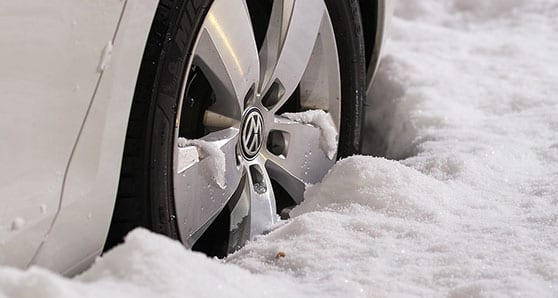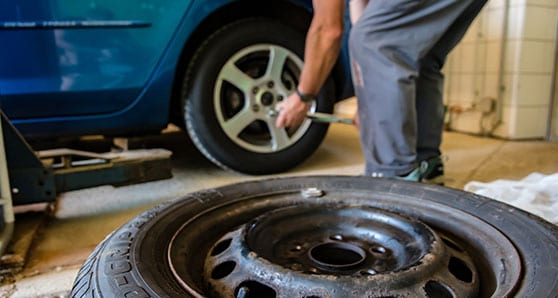 I hate to say it, but winter is just around the corner. In fact, in many places in Canada it’s already snowing, with sub-zero temperatures all over the place. Better get ready for coldness and the best place to start is where the rubber meets the road.
I hate to say it, but winter is just around the corner. In fact, in many places in Canada it’s already snowing, with sub-zero temperatures all over the place. Better get ready for coldness and the best place to start is where the rubber meets the road.
Let’s start with the obvious: Get winter tires installed.
Why?
Because when you come outside first thing in the morning and there’s 20 cm of fresh snow on the ground with the temperature below zero and icy roads everywhere you turn, they’ll help you get to work. Or, conversely, after a hard day in the salt mines, they can get you home through Canada’s winter wonderland.
But there’s more to the story than that. Winter tires can make the difference between arriving safely and not getting there at all.
Before we get into it, however, let’s define our terms. When we talk about winter tires, that’s precisely what we mean: put them on in the fall and take them off in the spring.
Available with or without studs, these are not to be confused with all-season tires, which, depending on who you talk to, provide the worst of both worlds: mediocre grip in the summer and lousy traction in the winter.
Winter tires are specifically made for inclement and cold weather, with an aggressive tread pattern, different construction and a different list of ingredients than summer tires. And considering the salt and other corruption that accumulates on Canadian roads come wintertime, it’s also a good idea to fit winter tires on winter rims. That way, you can just bolt them on and save those pretty alloys for nicer weather.
Winter tires are softer to conform to uneven road conditions and provide maximum traction by gripping the most road surface. Remember, the point of contact between your car’s tires and the road is a patch about the size of a small pancake.
In some parts of the country – Quebec and B.C., for example – it’s illegal to drive in the winter without proper snow tires. And if you try to get away without them and get caught, expect a fine at the very least. And rightly so.
Also, four tires are better than two. Just slapping a set of snowies onto your driving wheels isn’t going to do it. Yes, you may have better traction when it comes to getting through snow and ice, but your handling and braking goes out the window.
This is especially true in really cold weather. If you find yourself in a panic stop situation on a slick road, you need all the help you can get and winter tires will scrub off speed much more rapidly than all-season tires. Your stopping distance can be up to a third less, which may make all the difference.
All the major tire manufacturers have a full range of winter rubber and you can tell at a glance if what you’re looking at is a true winter tire and not just all-season rubber. Just look for the snowflake within a mountain symbol on the tire’s sidewall. If it doesn’t have that, it’s not the real thing.
And if you live in a place that has significant snowfall and really cold weather for the next six months, you might want to consider fitting studded tires. In seriously harsh driving conditions, these can make all the difference in the world.
Don’t try to cut corners here. Don’t buy them second-hand.
And if you’re unsure what kind of tires to fit on your vehicle, consult your local dealer to find out which is best for you. They more than anyone know what’s best for your car.
Ted Laturnus writes for Troy Media’s Driver Seat Associate website. An automotive journalist since 1976, he has been named Canadian Automotive Journalist of the Year twice and is past-president of the Automotive Journalists Association of Canada (AJAC).
The views, opinions and positions expressed by columnists and contributors are the author’s alone. They do not inherently or expressly reflect the views, opinions and/or positions of our publication.


